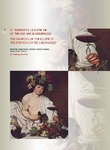Mostrar o rexistro simple do ítem
El trazado de la elipse en la pintura hasta Caravaggio
| dc.contributor.author | Fraga López, Fernando | |
| dc.contributor.author | Amado, Antonio | |
| dc.contributor.author | Colón Alonso, Marta | |
| dc.date.accessioned | 2020-04-16T09:46:28Z | |
| dc.date.available | 2020-04-16T09:46:28Z | |
| dc.date.issued | 2020 | |
| dc.identifier.citation | Fraga, Fernando, Antonio Amado Lorenzo, Antonio Amado Lorenzo, Marta Colón Alonso, and Marta Colón Alonso. “El trazado de la elipse en la pintura hasta Caravaggio.” EGA Revista de Expresión Gráfica Arquitectónica 25, no. 38 : 112-125. doi:10.4995/ega.2020.11420. | |
| dc.identifier.issn | 2254-6103 | |
| dc.identifier.uri | http://hdl.handle.net/2183/25336 | |
| dc.description.abstract | [Resumen] El círculo está presente en infinidad de elementos de nuestro entorno. Debido a que, visto en perspectiva, es percibido por el ojo como una elipse perfecta, no es descabellado afirmar que esta última es la curva más frecuente en la arquitectura, el arte o la ingeniería. Además, a diferencia de otras formas geométricas simples, su trazado, aún con la ayuda de herramientas como compases o plantillas, conlleva una complejidad importante. Repasar la innumerable cantidad de elipses dibujadas y pintadas desde la antigüedad, confirma que hacerlo con exactitud, a mano alzada, es prácticamente imposible. El artículo estudia la problemática del trazado de la elipse en el arte occidental hasta el siglo xvii. Se parte de la experiencia de Giotto y de los estudios acerca de las cónicas de Durero, para analizar posteriormente cómo una selección representativa de pintores (Campin, Leonardo o Rafael) se enfrentaron a la cuestión sin conseguir resolverla, a diferencia de Caravaggio quien, de alguna manera, lo soluciona | es_ES |
| dc.description.abstract | [Abstract] The circle is present in a great number of elements in our environment. As it has to be seen in perspective, is perceived by the eye as a perfect ellipse, one can assure that the latter is the most frequent in architecture, art and engineering. Besides, apart from other geometry simple forms, its drawing even using tools as compasses or templates, conveys an important complexity. To revise the innumerable quantity of ellipses that have been drawn and painted since ancient times, confirms that making the as it should be, free handed, is practically impossible. The article studies the drawing of the ellipse in the western art until the xvii century. It starts from the Giotto’s experiences and studies on Durero’s chronicles to eventually analyse as a representative selection of painters (Campin, Leonardo or Raphael) who faced the issue without managing to resolve it, unlike Caravaggio who, in a way, was the only one to achieve it | es_ES |
| dc.language.iso | eng | es_ES |
| dc.language.iso | spa | es_ES |
| dc.publisher | Universitat Politècnica de València | es_ES |
| dc.relation.uri | https://doi.org/10.4995/ega.2020.11420 | es_ES |
| dc.rights | Atribución-NoComercial-SinDerivadas 4.0 Internacional | es_ES |
| dc.rights.uri | http://creativecommons.org/licenses/by-nc-nd/4.0 | * |
| dc.subject | Pintura | es_ES |
| dc.subject | Perspectiva | es_ES |
| dc.subject | Elipse | es_ES |
| dc.subject | Geometría | es_ES |
| dc.subject | Painting | es_ES |
| dc.subject | Perspective | es_ES |
| dc.subject | Ellipse | es_ES |
| dc.subject | Geometry | es_ES |
| dc.subject | Caravaggio | es_ES |
| dc.title | El trazado de la elipse en la pintura hasta Caravaggio | es_ES |
| dc.title.alternative | The Drawing of the Ellipse in the Painting Until Caravaggio | es_ES |
| dc.type | journal article | es_ES |
| dc.rights.accessRights | open access | es_ES |
| UDC.journalTitle | EGA. Expresion gráfica arquitectónica | es_ES |
| UDC.volume | 25 | es_ES |
| UDC.issue | 38 | es_ES |
| UDC.startPage | 112 | es_ES |
| UDC.endPage | 125 | es_ES |
| UDC.coleccion | Investigación | es_ES |
| UDC.departamento | Expresión Gráfica Arquitectónica | es_ES |
| UDC.grupoInv | Grupo de Investigación en Representación Arquitectónica do Patrimonio (GIRAP) | es_ES |
Ficheiros no ítem
Este ítem aparece na(s) seguinte(s) colección(s)
-
Investigacion (ETSAC) [511]






